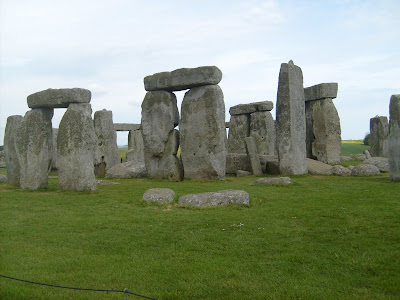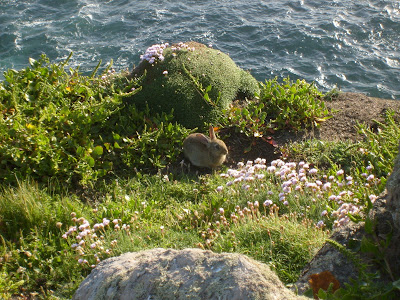
The rest of London was fine, and I was glad to get to see the Sutton Hoo burial display at the British Museum. I was glad to get out of the big city and be back in rural Norway. Getting back to Bø was not as easy as we thought it might be. When we got to the airport it turned out that there were no trains going that far, and the only bus going to Bø was leaving from Notodden and we couldn't get there in time to make it. So what we did was take a train to Skien, and then walked across the WHOLE city (the train station was not on the side of the town that we needed to be on) and then headed out on highway 36, hitchhiking to Bø. We actually didn't have to go very far before a nice, what looked like retired, couple picked us up. They said that they were only going to Ulefoss, but decided that they had to drive us not only all the way to Bø, but to our respective dorms! They were very very nice. It was a pleasant surprise since we had made up our minds that we were going to just walk all the way back to Bø.
Since I've been back in Bø I've mostly just been trying to hang out with everybody before they leave. Chenoa and Heather are gone, as well as Teddi and Esther. Most of the international students are gone as well. The Americans left are me, Gustie, Adam, Sarah and Nichole. We've been having communal dinners to try to get rid of all of the food that we have left.
I just finished watching all of the seasons of Seinfeld, and am working on reading a couple of books while I'm still here. I have been trying to read bits of the Silmarillion, Unfinished Tales and The Children of Hurin, all in bokmål. I have also sort of started the nynorsk translation of the Lord of the Rings, which is very interesting. In the translator's comments, it is noted that Tolkien, who claims to be translating the story from an ancient lost document (a method known as "pseudo-translation"), has dimmed down the dialectal variation amongst the characters. The translator says that he has actually made the variation larger than Tolkien allowed it to be, due to the fact that there is enormous dialectal variation in Norway, and that it is more easily understood by the entire Norwegian speaking population (employing obscure dialectal English words would have made reading LotR very difficult indeed). So, reading this translation will be very fun and challenging.
In addition to reading, I have also been doing a fair share of flyfishing. Last week I went down to the sports store and asked what some good flies were for the area, and I was suggested three. One was a sort of elk-hair-caddis streamer, another was like a royal wulf, but with brown wings, and another was a sort of mayfly imitation it looked like, with wrapped with green thread around the hook. This last one has been the most successful one (I actually haven't caught anything on the other ones, though I lost the caddis pretty fast), and I bought three more this week. Here are some fishing pictures. I'm particularly proud of the first fish in the series, because I caught him using my recently acquired yet poorly executed roll-cast. It's a cast used when there are trees right behind you and you are unable to do the typical back-and-forth casting used for flyfishing.














 (English, Cornish, German, Italian, French, Spanish)
(English, Cornish, German, Italian, French, Spanish)
































